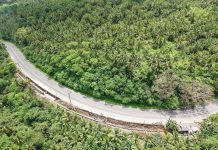TACLOBAN CITY – The Department of Agriculture (DA) tagged more than 81,000 hectares of rainfed rice farms in the region as highly vulnerable to impacts of El Niño phenomenon that is expected to occur in the last quarter of this year. Elvira Torres, DA’s regional technical director for research and regulation, said they are closely watching these areas for possible prolong dry season that will be prevalent starting October, citing state weather bureau.
“Our priority is rainfed rice areas highly vulnerable to negative impacts of dry season. We are also working on building the capabilities of local government units to implement mitigation measures,” Torres said.
Since 2013, the DA has been promoting drought resistant variety of crops such as adlai and soybeans, rice varieties that requires less water and application of affordable water storage technology. Of the 81,096 hectares of areas without irrigation supply, 18,699 are in Leyte, 1,158 hectares in Southern Leyte, 18,019 hectares in Samar, 15,235 hectares in Eastern Samar, and 27,984 hectares in Northern Samar.
Rainfed areas are farms that rely mainly on rainfall for irrigation water. This kind of farming exists because of the absence of canals that would bring water from rivers to farms. For highly vulnerable areas, the farm department promotes diversified farming, use of climate resilient rice seeds, and effective water management approach. Tagged as the top 10 towns with biggest non-irrigated areas are Las Navas in Northern Samar (4,402 hectares), Dolores in Eastern Samar (4,300 hectares), Laoang in Northern Samar (4,073 hectares), Basey in Samar (3,507 hectares), Palapag in Northern Samar (3,466 hectares). Also included are Catubig, Northern Samar (3,313 hectares), and Catarman in Northern Samar (2,884 hectares), Calbayog City in Samar (2,001 hectares), Bobon in Northern Samar (1,992 hectares), and Sta. Rita in Samar (1,964 hectares).
Since 2013, the DA has been promoting drought resistant variety of crops such as adlai and soybeans, rice varieties that requires less water and application of affordable water storage technology. The Department of Science and Technology (DOST) foresees the onset of El Niño in June 2014, which may peak during the last quarter of 2014 and may last up to the first quarter of 2015. “El Niño could affect the normal rainfall pattern in the country generally resulting in reduced rainfall. Different parts of the country may experience varying rainfall impacts,” the DOST said in its El Niño watch. The DOST advisory disclosed that the country could still experience normal number of tropical cyclone this year. However, El Niño causes the behavior of tropical cyclones to become erratic, affecting its tracks and intensity.
The phenomenon is expected to shift tropical cyclone tracks northward and its intensity could become stronger, the DOST warned. The El Niño is the weather phenomenon brought on by the unusual warming of ocean surface temperatures in the central and eastern equatorial Pacific.
By Sarwell Q. Meniano



